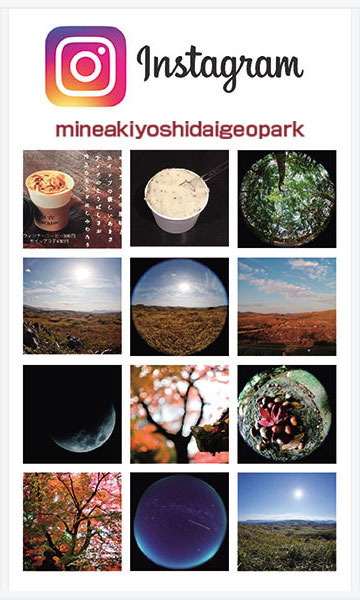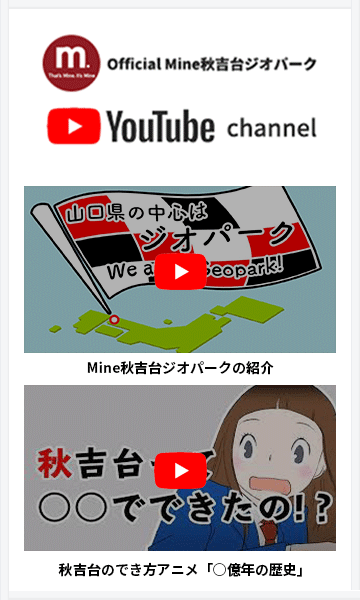About Miné-Akiyoshidai Karst Plateau Geopark
Miné-Akiyoshidai Karst Plateau Geopark is based on the themes of white, black, and red. The geopark's highlights include Akiyoshidai, a karst plateau made of limestone (white); Omine Coalfield, which produces anthracite coal (black); and the Naganobori Copper Mine Ruins, where copper (red) that was used to build the Great Buddha of Todaiji Temple was produced. The people of this area have long made use of the karst topography. At Miné-Akiyoshidai Karst Plateau Geopark, visitors can experience not only the history and lifestyle unique to the karst topography, but also the dynamic nature of the Earth that created it.
Click here for more information
Features of Miné-Akiyoshidai Karst Plateau Geopark from a Global Perspective
Limestone (White)
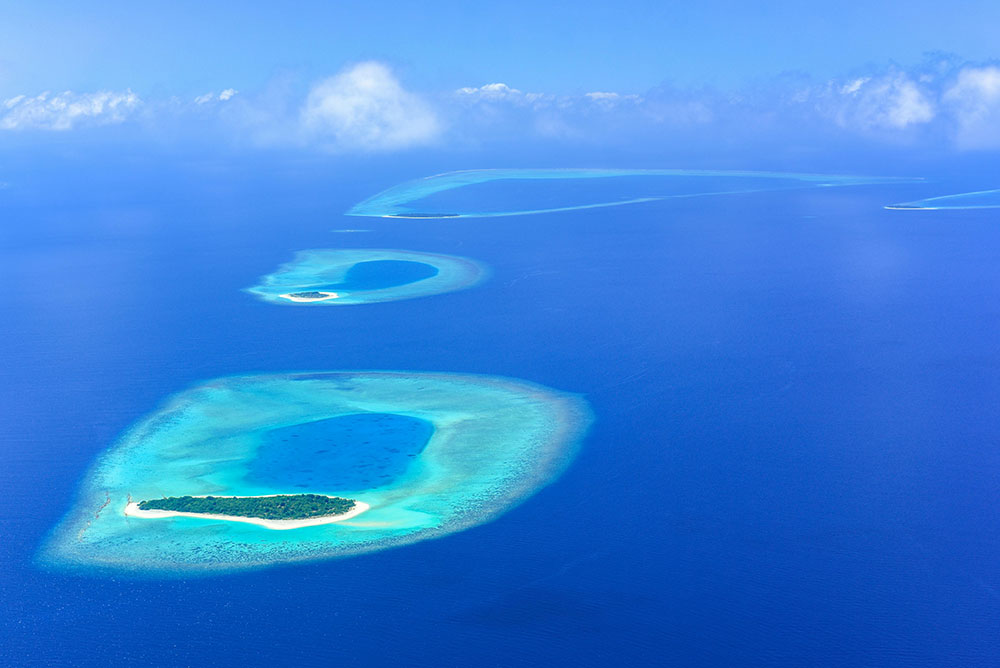 Aerial image of the habitat of organisms such as coral, which formed the limestone of Akiyoshidai.
Aerial image of the habitat of organisms such as coral, which formed the limestone of Akiyoshidai.
The limestone in our Geopark was formed approximately 300 million years ago through the accumulation of carcasses of organisms such as coral that grew on top of a submarine volcano, far from the continent. Because these organisms grew for around 80 million years, the limestone preserves a record of the marine environment of that time period. Most limestones across the world have formed near the coast from corals and other organisms that live in shallow waters, so the limestone of our Geopark that preserves information on the marine environment is extremely valuable.
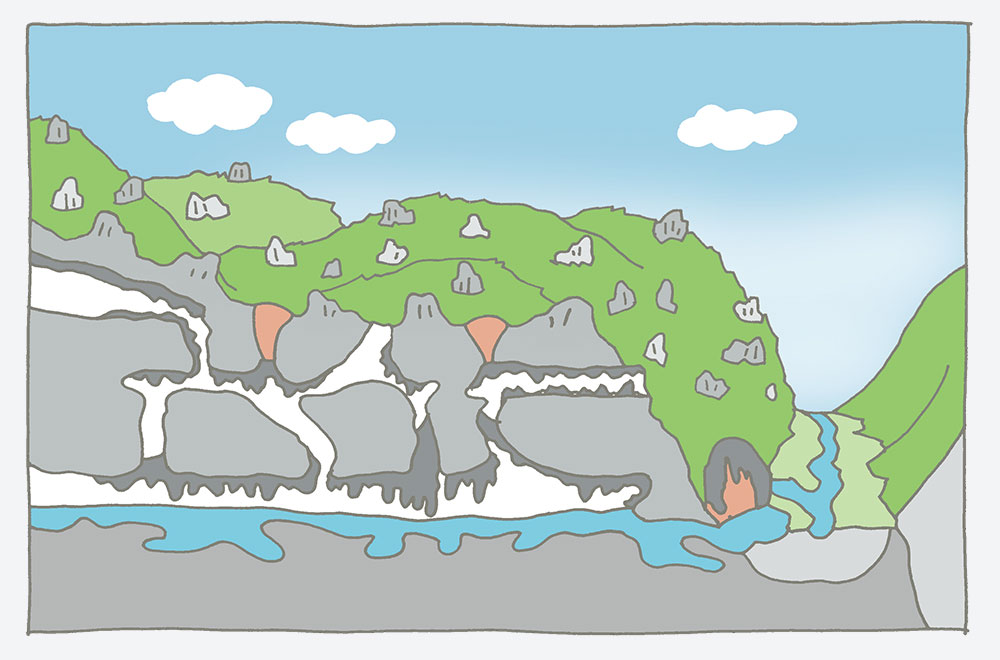 Cross-sectional depiction of ground surface depressions and underground caves formed by being dissolved by limestone.
Cross-sectional depiction of ground surface depressions and underground caves formed by being dissolved by limestone.
The limestone within our Geopark has an area of approximately 100 km2. This is very small in comparison to limestone areas around the world. However, within this small area, there are numerous depressions (dolines) on the ground surface, as well as over 450 densely distributed limestone caves. These were formed between several million years ago and the present day through the dissolving of limestone by rainwater and groundwater. As a result of this, a three-dimensional, labyrinthine groundwater system has developed in the interior of the limestone. The groundwater system, as well as the cave-dwelling creatures that inhabit the groundwater system, are registered under the Ramsar Convention on Wetlands.
Anthracite (Black)
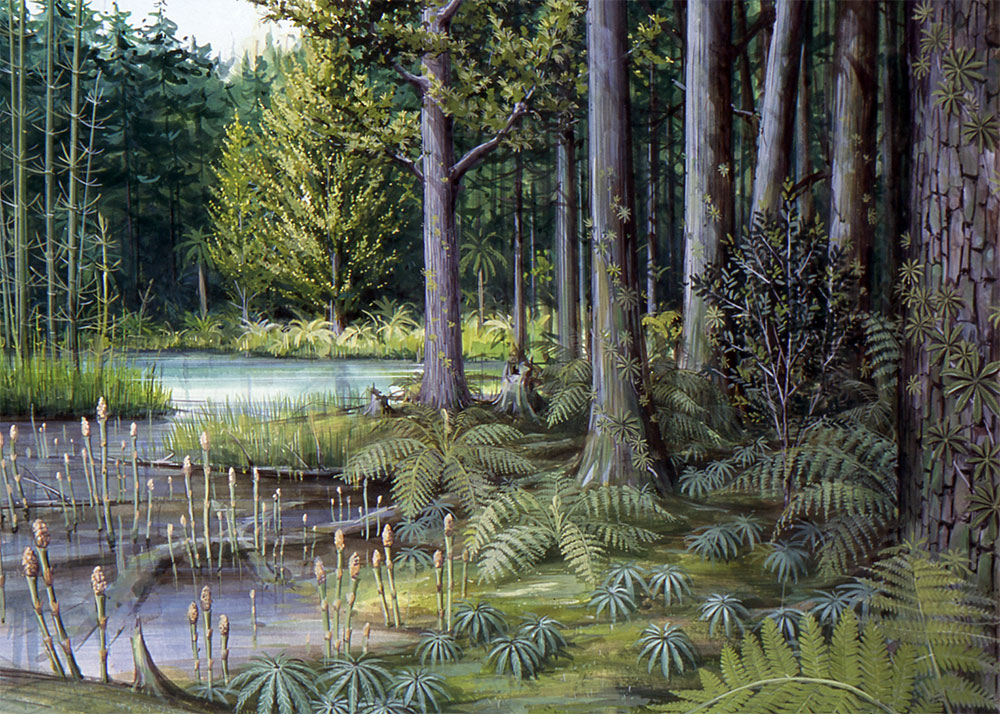 Depiction of the land and plants etc that formed the anthracite coal.
Depiction of the land and plants etc that formed the anthracite coal.
The coal that is produced in our Geopark is the most carbonised anthracite which originated from ferns and gymnosperms that grew near bodies of water (rivers, lakes, etc.) on land approximately 200 million years ago. Insects and fishes also inhabited the area during that period, and a lot of their fossils are found in the coal-bearing strata. These fossils are evidence of organisms that survived and thrived during the “mass extinction” which occurred approximately 250 million years ago, and are extremely important for understanding the evolution of life. Coal that originated from plants during this period is very rare in the world, which makes it extremely valuable.
Copper (Red)
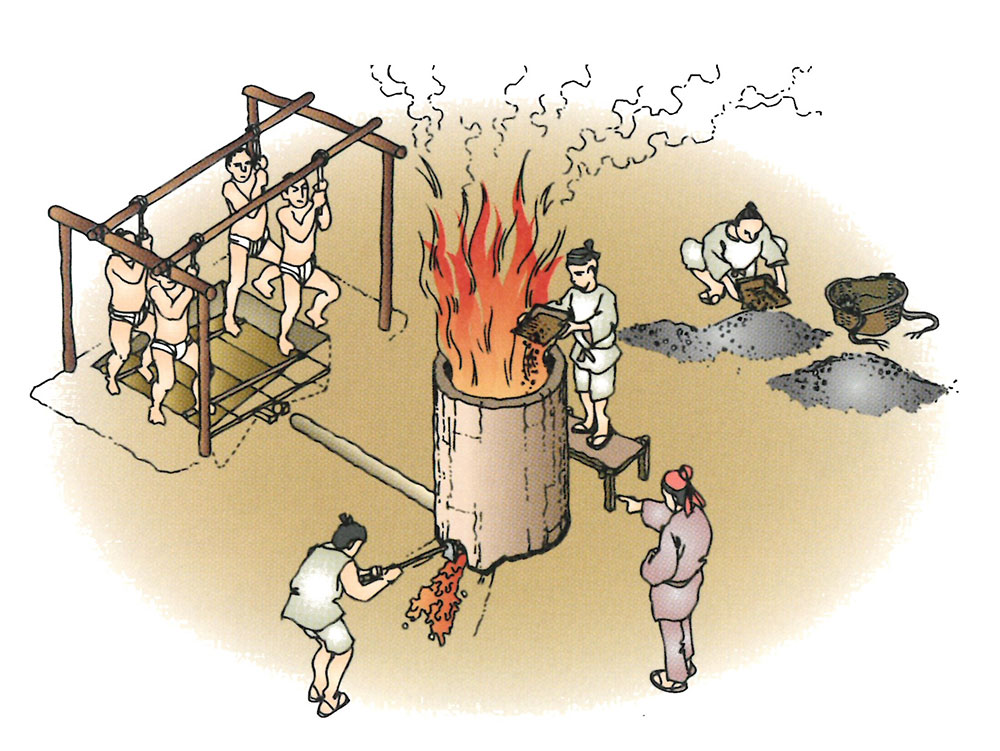 Depiction of ancient copper smelting (Reference: Naganobori Copper Mine Cultural Exchange Center Exhibition Catalog p.31).
Depiction of ancient copper smelting (Reference: Naganobori Copper Mine Cultural Exchange Center Exhibition Catalog p.31).
The copper produced in our Geopark was formed approximately 100 million years ago through the reaction of limestone with hydrothermal water that resulted from magmatic activity. This magmatic activity was active throughout the Pacific Rim region during this period, and formed many mineral deposits within and beyond the area. It has been confirmed that a facility was set up in this area during the 8th century for copper mining and smelting, and that this was the oldest government-operated copper mine in Japan. Smelted copper was used during this period to cast the Great Buddha of Nara and to mint coins, and this contributed significantly to the cultural and economic development of ancient Japanese society.
Code of Conduct
~The 9 Rules of Miné-Akiyoshidai
Karst Plateau Geopark~
- Take home your trash. Pick up any trash that you find.
- Be aware of weather conditions and prepare appropriate clothing and items (hats, drinks etc).
- Drive safely.
- Don’t leave the footpaths when walking through the karst plateau or show caves.
- Follow the instructions of guides (such as geoguides) when visiting the geopark with them.
- Don’t access sites that can only be accessed with a guide (such as a geoguide) without gaining permission.
- Don’t remove, damage, or cause harm to plants, stones, or animals.
- Don’t purchase rocks, fossils, or minerals.
- Respect the natural environment of the Earth.






